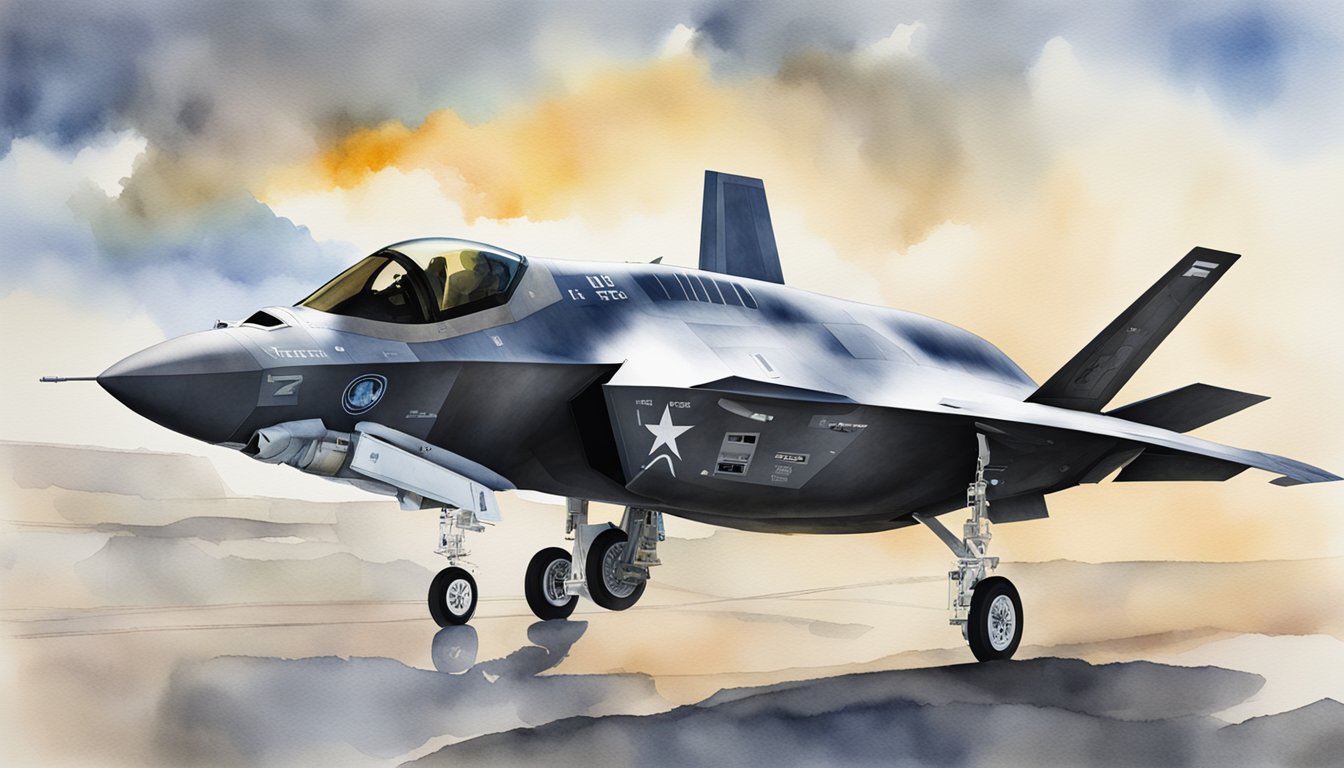F-35 Helmet Overview
The F-35 helmet is a key component in the F-35 Lightning II’s suite of advanced technologies. It integrates cutting-edge advancements to provide pilots with unprecedented situational awareness and flight data.
Cutting-Edge Technology
The F-35 Helmet Mounted Display System is a marvel of modern technology, developed by pioneers like Elbit Systems and Rockwell Collins, now known as Collins Aerospace. The system eschews traditional heads-up displays by projecting vital information directly onto the helmet’s visor, using a combination of organic light-emitting diode (OLED) and liquid crystal displays.
Design and Functionality
Each helmet is custom-fitted for the individual pilot, undergoing a precise fitting process that involves a pupilometer to ensure optimal optics and comfort. The design of the helmet allows for a seamless integration with the aircraft’s Distributed Aperture System (DAS), which pipes in real-time imagery from cameras mounted around the aircraft to give pilots a 360-degree view of their surroundings.
Enhanced Capabilities for Pilots
The helmet’s advanced capabilities extend to safety and combat operations, incorporating features like night vision through the use of an integrated night vision camera. Pilots can see through the F-35’s structure, and the helmet-mounted Optical Display System presents the data from various sensors and avionics on the F-35 Lightning II, enhancing the pilot’s situational awareness and enabling them to make quick, informed decisions at a distance, day or night.
Operational Integration and Support
The F-35 pilot helmet is a pinnacle of advanced military technology, integrating cutting-edge systems for operational excellence. From routine checks to complex repairs, every aspect is critical for mission success.

Maintenance and Upkeep
F-35 helmets undergo stringent routine maintenance to guarantee functionality. This includes post-flight fitting checks and oxygen tester usage to ensure pilots receive adequate oxygen flow. The Air Force Reserve’s 419th Operations Support Squadron is instrumental in performing these tasks, with care taken at every stage from assembly to repairing.
Pilot and Ground Crew Collaboration
Aircrew Flight Equipment (AFE) shops facilitate pilot and ground crew collaboration. Here, specialists like those from the 419th Fighter Wing work closely with pilots for mask adjustments and assessing gear condition. After flights, the collaboration continues as helmet fit and oxygen flow are evaluated.
Military Integration and Impact
With the joint efforts of the Air Force Reserve, Navy, Airmen, and Marine Corps, the F-35 unit is a formidable force. The helmet’s innovative technology enables pilots to remain synchronized with the airframe, aiding in targeting and battlefield awareness. They play a distinct role in tactical refueling and combat scenarios, indicative of their broader military impact.
Economic and Resource Considerations
Despite the high cost of such innovative technology, the investment in these helmets brings tremendous value. The fit facility within the 419th Operations Support Squadron exemplifies how resources are allocated effectively, preventing issues such as leaks and ensuring gear is combat-ready at all times. The maintenance of these complex systems is a balance of resource management and operational necessity.
For additional specifics on the fitting process and the importance of the 419th Operations Support Squadron, you can read about an inside look at F-35 pilot helmet fittings.

